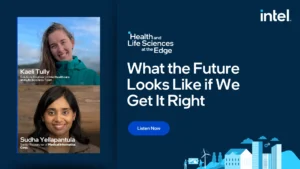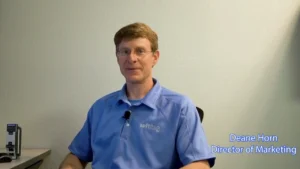How to Create Modularity in Data Centers
Edge Data Centers and Modularity: What Does It Really Mean?
Modularity in data center construction has been around for over a decade. It began by taking the simple concept of standard, shipping container configurations and converting them into modular data centers but has since evolved into fully designed and prefabricated data center modules.
For the most part, these modules still match shipping container form factors, but they now exhibit designs much better suited for IT implementations with improvements in cost and performance.
The benefits of going modular have made it an intriguing option for many new construction projects – but there are many considerations you’ll need to keep in mind to make any modular project a success.
The Two Central Categories of Modularity in Data Centers
With the emergence of edge computing and increasing demand for IT support and applications closer to the end user, modular design can help organizations save on both implementation time and costs without sacrificing key functionality, scalability or performance.
The challenge, then, is that the term “modularity,” just like the terms “cloud” or even “edge,” can be interpreted in many different ways based on the particular discussion or project at hand.
Let’s try to clear up some of that murkiness. To begin, we’ll better define modularity by splitting it into two main buckets – modular components that are utilized for a traditional data center configuration and fully complete modular IT solutions.
Modular components can literally be any type of data center component that can be placed on a skid or platform, assembled in a factory environment, then shipped to the site for final integration.
This can include chiller systems, power distribution and UPS systems, air handlers, and even modular or segmented data halls (white space) that are shipped onsite. The primary objective of any of these solutions is to improve efficiencies and save on site construction time.
On the other end of the spectrum is what is defined as the prefabricated or modular IT data center. This type of data center is comprised of three primary elements – cooling, power distribution and the IT enclosure.
These systems can be part of an IT solution provided by and IT OEM, can be solution-based and tailored to a specific application and use case, or can be agnostic to the IT application or environment. The challenge is how these elements are designed, sized and configured for your organization’s unique IT application and load.
What to Consider when Choosing a Modular IT Data Center
There is a growing demand for complete IT modular solutions in multiple markets for edge or other specific application deployments. With that growth comes multiple vendors that offer full, end-to-end IT modularization. How these vendors approach modularity is a critical element to understand, as modular solutions do operate differently than more traditional data center implementations.
As an example, modular data centers have a much more tightly coupled power and cooling relationship with the IT than is found in a traditional raised floor data center environment. For cooling, this means that the reaction time is quite a bit different when the IT power load cycles up or down or if the cooling fails.
A good illustration of this is a typical conference room that we will assume holds about 12 people. Further assume that there are seven people in the room one day in July, and the air conditioner stops working. Given the size of the room and the fact that it was sized for more people than are present, you may not even notice the AC is out for quite a while or until air in the room starts to get stuffy.
This is comparable to loosing a CRAC or CRAH unit in a traditional data center where, due to capacity sizing, typical rack IT load, etc., you can potentially lose a cooling unit that may not affect the IT for quite some time, if at all.
Now, assume you are in a car, still in July, with a friend. The AC in the car goes out. You would probably notice it almost immediately, and it would get very uncomfortable very quickly.
This is analogous to how modular closely coupled cooling works. The reaction time if the IT load changes dramatically or you have a cooling failure is much more pronounced and immediate, so you must take that into account in your capacity planning.
Notice we have not mentioned failover, redundancy, N+1, tier levels, etc., which, for any data center, would be part of the planning process. Yes, these elements still matter, but they are considered a bit differently given how failover and redundancy function in a modular application.
For modular IT deployments, TAS recommends that you consider the following elements as part of your planning:
1. Understanding your application and the actual application dynamics. What are you supporting from an IT perspective, how does the application function, and what are the IT load characteristics or power operating ranges you expect to see?
2. How much IT and IT infrastructure do you need to support the application and the use case? How much IT and how many IT racks are you going to deploy to support the application requirements, and what is the kW/rack load dynamics?
3. What other factors affect your IT application or sizing requirements?
From the above information, you can start to size and optimize your modular solution to your actual application and IT operating environment. This will allow you to better optimize IT infrastructure elements, module costs and final operating costs.
This approach also allows you to optimize for your actual application using the three elements of modularity we discussed earlier – power, cooling and the IT enclosure matching each to your specific application and operating requirements.
Working Alongside TAS to Find Your Ideal Solution
With those two central categories of modular data centers in mind, you can better approach your own project and find the right solution for your needs. You’ll need to consider available site construction time, overall timeline, costs and more, but you’ll be more informed to think about these factors in a meaningful way.
Here are a few other key considerations you’ll need to keep in mind:
– Do you have a very specific location in mind? Traditional, stick-built data centers require more rigidity in their placement, while modular solutions can essentially be built anywhere.
– What amount of scalability do you need? Modular construction often offers more ability to expand the data center in the future than traditional construction.
– What about powering the data center, itself? Smaller footprints are typical with modular solutions, which can mean savings on power and cooling costs.
Choosing to partner with an experienced industry leader like TAS can also help ensure you choose the right modular data center solution for you.
TAS leverages a proven and robust supply chain and expert teams, working alongside you to complete the optimal project for you. To learn more, contact TAS today.
—
Follow us on social media for the latest updates in B2B!
Twitter – @MarketScale
Facebook – facebook.com/marketscale
LinkedIn – linkedin.com/company/marketscale









